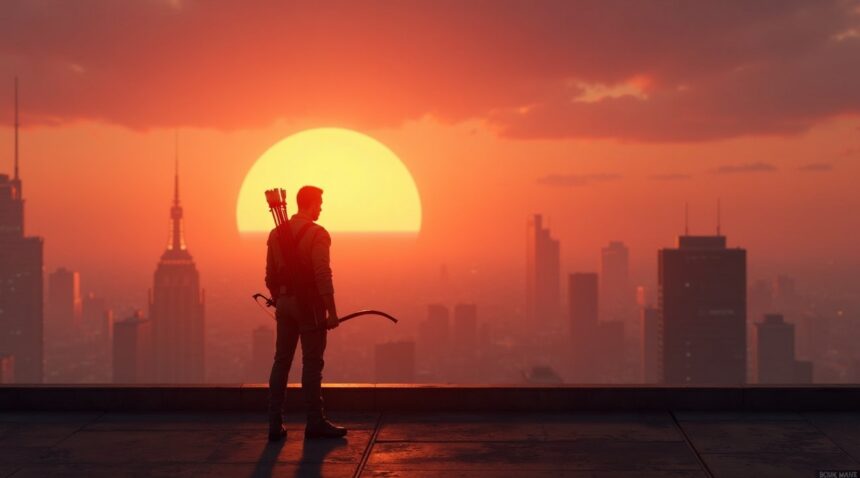Jeremy Renner has decisively confirmed his exit from Marvel’s upcoming Avengers films, including Avengers: Doomsday and Avengers: Secret Wars, bringing his decade-long portrayal of Hawkeye to a definitive end. His departure completes the original six Avengers roster’s transition away from the Marvel Cinematic Universe, as all founding members have now either died, retired, or stepped away from their iconic roles.
Key Takeaways
- Jeremy Renner delivered an emphatic “No. No.” when asked about returning for future Avengers films, firmly closing the door on his Hawkeye role in theatrical releases.
- Renner remains open to possibilities on Disney+, expressing interest in returning for a second season of Hawkeye on the streaming platform under the right conditions.
- Marvel has options to continue Hawkeye’s legacy, either through Kate Bishop, introduced as his protégé in the Disney+ series, or alternate versions of Hawkeye via the multiverse.
- This marks the official end of the original Avengers team’s presence in the MCU, with all six founding members having concluded their stories through death, retirement, or actor departures.
- Renner’s focus has shifted to personal recovery and new projects following his 2023 snowplow accident, giving Marvel ample time to reshape the narrative for their 2026 and 2027 Avengers films.
Jeremy Renner Gives Definitive “No” to Future Avengers Films
Jeremy Renner has officially closed the door on his return as Clint Barton, delivering an unequivocal response when asked about reprising his Hawkeye role in upcoming Marvel films. The actor confirmed in multiple interviews that he won’t be returning for either Avengers: Doomsday, scheduled for release December 18, 2026, or Avengers: Secret Wars, slated for December 2027.
When pressed specifically about his involvement in these highly anticipated films, Renner’s answer couldn’t have been clearer: “No. No.” This definitive statement puts an end to speculation about whether the veteran archer would make one final appearance alongside Earth’s Mightiest Heroes.
Marvel’s Path Forward Without Hawkeye
Renner hasn’t left Marvel completely in the dark about potential alternatives. He acknowledged the studio’s creative freedom to explore different directions with the character, stating, “If they want to do that [replace him with a Hawkeye Variant], they can go ahead by all means… I’m pretty busy myself.” This comment suggests he’s not only at peace with stepping away but also open to Marvel introducing a Hawkeye variant through their established multiverse storylines.
The multiverse concept gives Marvel considerable flexibility in how they handle character transitions. Recent films have demonstrated how different versions of beloved heroes can seamlessly integrate into existing narratives, potentially allowing a new actor to take up the bow without disrupting continuity. This approach has already proven successful with other characters across various Marvel properties.
Actor’s Current Priorities
Renner’s comment about being “pretty busy myself” hints at his focus on other projects beyond the Marvel Cinematic Universe. The actor has been actively pursuing different ventures, and his snow plow accident in January 2023 may have also influenced his perspective on taking on physically demanding superhero roles. His recovery journey has been well-documented, and it appears he’s choosing to prioritize projects that align with his current life circumstances.
The timing of this announcement gives Marvel Studios ample opportunity to plan accordingly for their upcoming Avengers films. With production schedules for major blockbusters typically requiring years of preparation, Renner’s early confirmation allows the creative team to develop storylines that either write around Hawkeye’s absence or introduce compelling alternatives that serve the larger narrative. Entertainment industry shifts like this often create opportunities for fresh storytelling approaches.
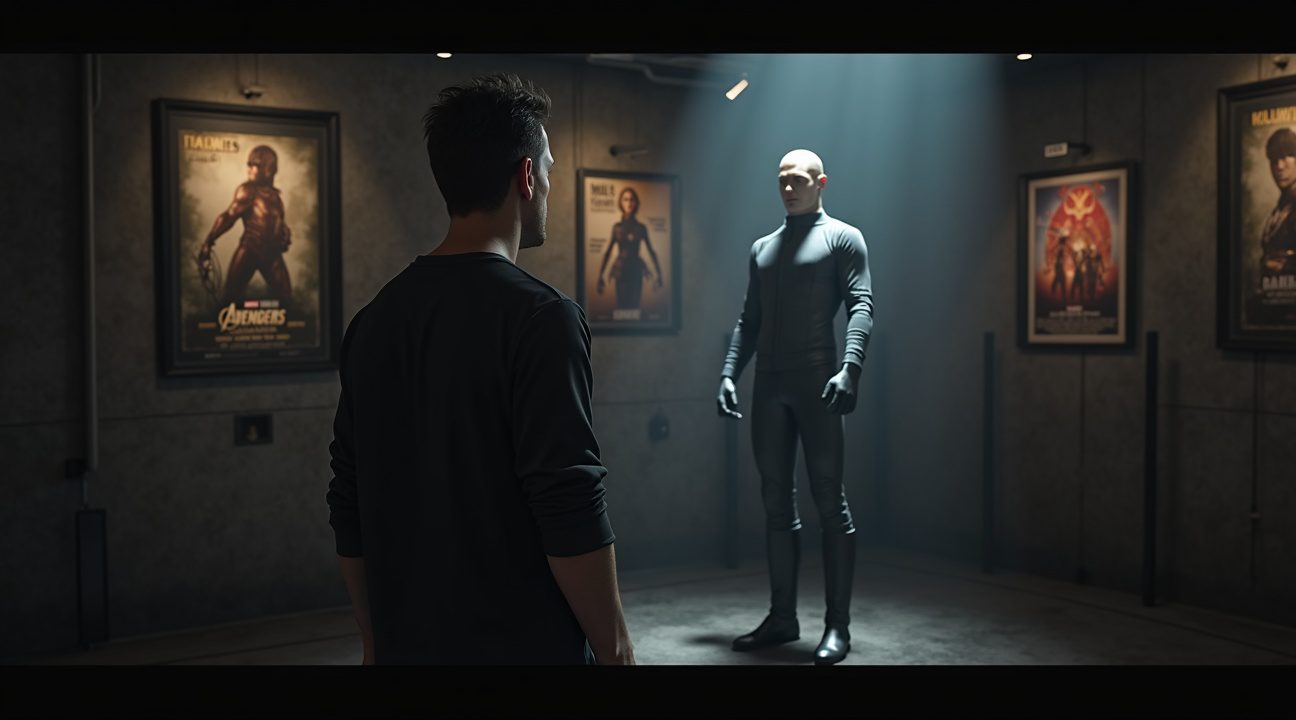
The End of an Era: Original Six Avengers Officially Complete Their MCU Journey
Jeremy Renner’s confirmation that he won’t return as Hawkeye represents the final chapter in the original Avengers saga. I’ve watched this legendary roster gradually dissolve over recent years, and Renner’s departure officially closes the book on Marvel’s founding superhero team. The original six members who first assembled in 2012 have now completed their collective journey in the Marvel Cinematic Universe.
Where Each Original Avenger Stands
The current status of each founding member tells a story of sacrifice, retirement, and evolution:
- Tony Stark made the ultimate sacrifice in Avengers: Endgame.
- Steve Rogers chose to retire and live the life he’d always wanted.
- Natasha Romanoff gave her life to secure the Soul Stone, ensuring the team could reverse Thanos’s devastation.
- Thor continues his adventures in the MCU, though he’s operating outside the traditional team structure.
- Hulk, portrayed by Mark Ruffalo, maintains an ambiguous status with an uncertain future in the franchise.
- Hawkeye, played by Jeremy Renner, has officially retired, completing the circle of the original Avengers.
Now with Renner’s official retirement from the cinematic team, the original roster has reached its natural conclusion.
A Cultural Shift for Marvel’s Future
This transition marks more than just casting changes—it represents a fundamental shift in how Marvel approaches storytelling. The original Avengers carried the MCU through its first three phases, establishing the foundation that made projects like unique superhero productions possible across different studios.
Phase 6 brings emphasis on legacy characters and multiverse exploration, moving away from the grounded, character-driven approach that defined the original team. I see this as Marvel’s attempt to recapture the magic while acknowledging that certain stories have natural endpoints. The studio faces the challenge of maintaining emotional investment without the characters who built the franchise’s initial success.
Renner’s departure completes a narrative arc that began over a decade ago. His Hawkeye represented the everyman among gods and super-soldiers, providing a relatable anchor for audiences. The character’s evolution from S.H.I.E.L.D. agent to reluctant Avenger to protective family man reflected many fans’ own journeys through life’s complexities.
Marvel now enters uncharted territory, building new teams while honoring the legacy of those who came before. This transition period will test whether tribute-based storytelling can sustain audience engagement or if fresh approaches will emerge to fill the void left by these iconic characters.
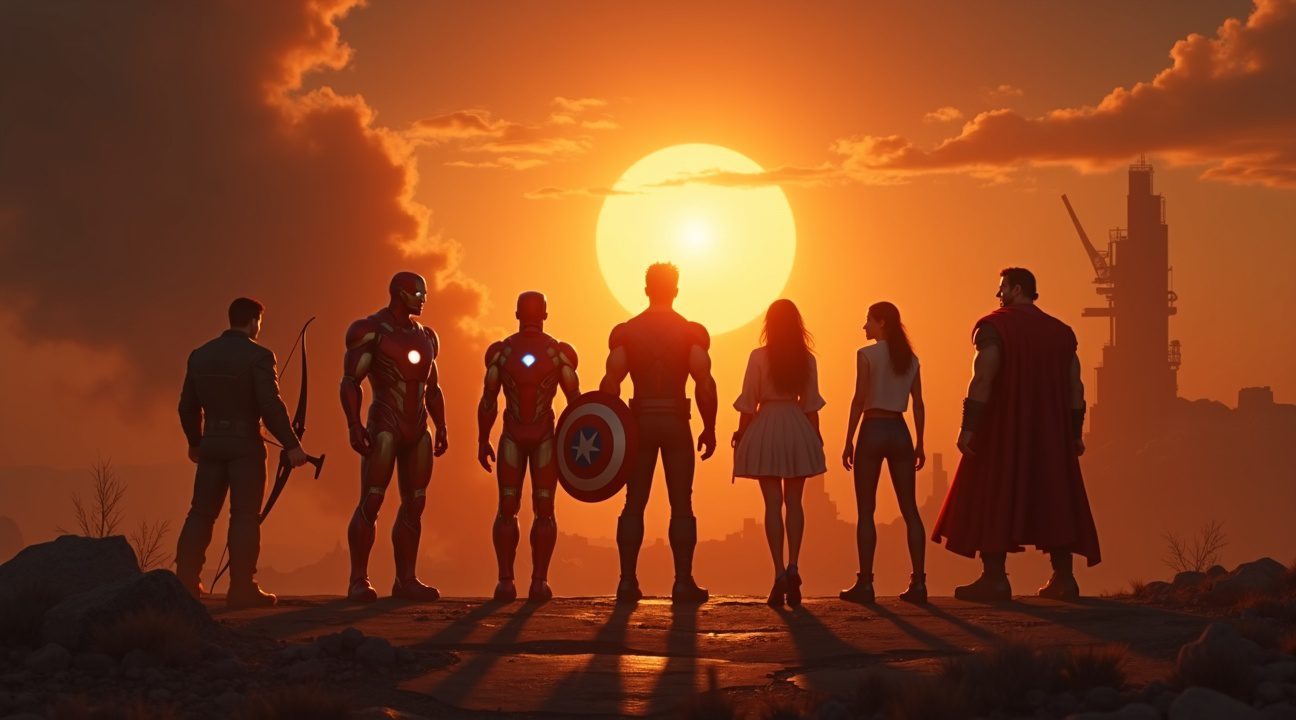
Marvel’s Multiverse Solution: Hawkeye Variants and Recasting Possibilities
Marvel Studios hasn’t closed the door on the Hawkeye legacy, despite Jeremy Renner’s departure from the role. The studio’s expanding multiverse concept opens numerous pathways to continue the character’s story without requiring Renner’s return.
Renner himself expressed no concerns about potential recasting, stating simply: “If they want to do that, they can go ahead and do that. I’m pretty busy myself.” This straightforward response suggests the actor holds no reservations about Marvel pursuing different directions with the character he portrayed for over a decade.
Kate Bishop’s Rising Role and Multiverse Opportunities
Following Endgame, Renner’s Clint Barton served as mentor to Kate Bishop, played by Hailee Steinfeld, in the Disney+ series Hawkeye. This mentorship dynamic established a clear succession path within the MCU’s narrative structure. Industry observers widely speculate that Bishop may officially assume the Hawkeye mantle in future Marvel projects.
Marvel’s multiverse strategy provides additional creative flexibility beyond simple succession. The studio could introduce entirely different Hawkeye variants from alternate realities, each bringing unique characteristics while maintaining the character’s core identity. This approach has proven successful with other MCU properties, allowing fresh interpretations without abandoning established storylines.
Some fans remain skeptical about Renner’s definitive departure, pointing to Marvel’s history of actors denying involvement due to strict non-disclosure agreements. However, industry consensus indicates Renner’s decision represents a genuine step away from the franchise rather than contractual secrecy. His recent focus on recovery from his snowplow accident and other personal projects supports this interpretation.
The multiverse concept also enables Marvel to experiment with different casting choices while preserving Renner’s legacy within the prime MCU timeline. This strategy allows the studio to honor the original character’s journey while exploring new creative possibilities through variant interpretations.
Marvel’s approach to character transitions has evolved significantly since the early MCU phases. Rather than simply replacing actors, the studio now crafts narrative explanations that respect both departing performers and incoming talent. This method maintains continuity while providing audiences with logical story progression.
Whether through Kate Bishop’s elevation or multiverse variants, Hawkeye’s presence in future Marvel projects appears likely despite Renner’s departure. The character’s popularity and strategic importance within the Avengers roster make complete retirement unlikely, even as the original actor moves on to other ventures.
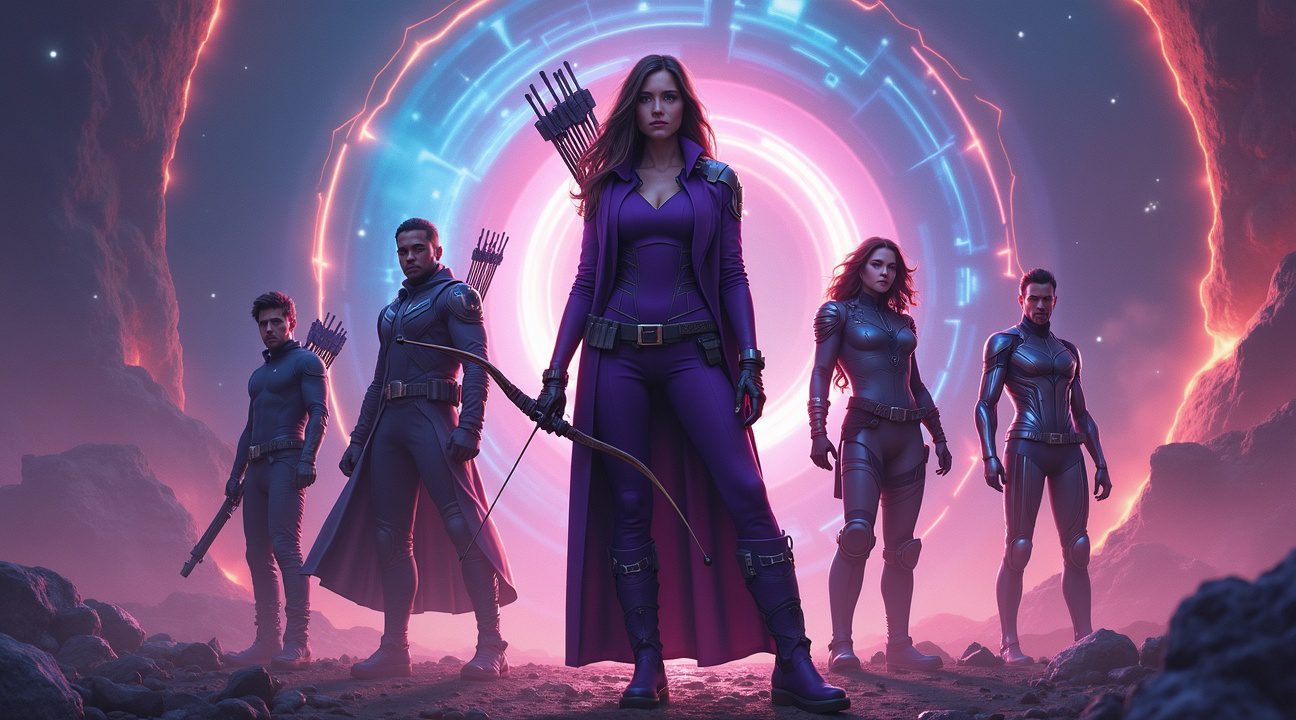
Upcoming Avengers Films Mark Major MCU Shift
Marvel Studios is preparing for a dramatic transformation with two massive films that will reshape the MCU landscape. Avengers: Doomsday arrives in theaters on December 18, 2026, followed by Avengers: Secret Wars on December 17, 2027. These back-to-back releases represent more than typical superhero sequels – they signal a fundamental shift in how Marvel approaches its cinematic universe.
Both films anchor Marvel’s Phase 6 strategy, which promises to introduce an unprecedented mix of new and returning characters. The studio plans to incorporate X-Men actors into the MCU for the first time, finally bringing mutants into the main Marvel film continuity. This integration has been highly anticipated since Disney’s acquisition of Fox’s film assets, and these Avengers films will serve as the vehicle for this historic merger.
Doctor Doom Takes Center Stage
Perhaps the most shocking development involves Robert Downey Jr.’s return to the MCU, but not as Tony Stark. The Oscar-winning actor will portray Victor Von Doom, also known as Doctor Doom, marking one of the most unexpected casting decisions in superhero cinema history. This choice represents a bold creative gamble that positions one of Marvel’s most iconic villains at the center of the next Avengers saga.
The shift to Doctor Doom as the primary antagonist wasn’t part of Marvel’s original plan. Studios initially developed Avengers: The Kang Dynasty with Jonathan Majors set to continue his role as the time-traveling villain Kang the Conqueror. However, legal troubles surrounding Majors forced Marvel to completely abandon this storyline. Combined with declining box office revenues across several MCU projects, the studio decided to pivot entirely.
This strategic change reflects Marvel’s willingness to adapt when circumstances demand it. Rather than forcing a narrative that no longer served their vision, executives chose to embrace Doctor Doom’s rich comic book history and complex character dynamics. The villain’s connection to the Fantastic Four and his status as one of Marvel’s greatest antagonists provides fertile ground for the kind of epic storytelling these films require.
The decision to cast Downey Jr. in this role adds another layer of complexity to the narrative possibilities. His previous portrayal of Iron Man created one of the MCU’s most beloved characters, and his return in an adversarial role promises to generate significant emotional stakes for longtime fans. This casting choice demonstrates Marvel’s commitment to surprising audiences while honoring the interconnected nature of their cinematic universe.
These upcoming films also represent a significant departure from the more grounded approach of recent MCU entries. Secret Wars, in particular, draws from some of Marvel Comics’ most ambitious crossover events, suggesting that these movies will embrace the kind of multiversal storytelling that allows for virtually unlimited creative possibilities.
The timing of these releases creates an interesting dynamic for Marvel’s overall strategy. With nearly two years between announcements and the first film’s debut, the studio has ample time to refine their approach based on audience reception of intervening projects. This extended development period also allows for more careful integration of the X-Men characters and proper setup for Doctor Doom’s introduction.
Marvel’s Phase 6 strategy clearly aims to recapture the cultural momentum that defined the Infinity Saga’s conclusion. By positioning these two Avengers films as the culmination of years of storytelling, the studio hopes to recreate the excitement that surrounded Infinity War and Endgame. However, the success of this approach will largely depend on how effectively Marvel can balance nostalgia with innovation, bringing back familiar elements while introducing fresh perspectives that justify the continued expansion of their cinematic universe.
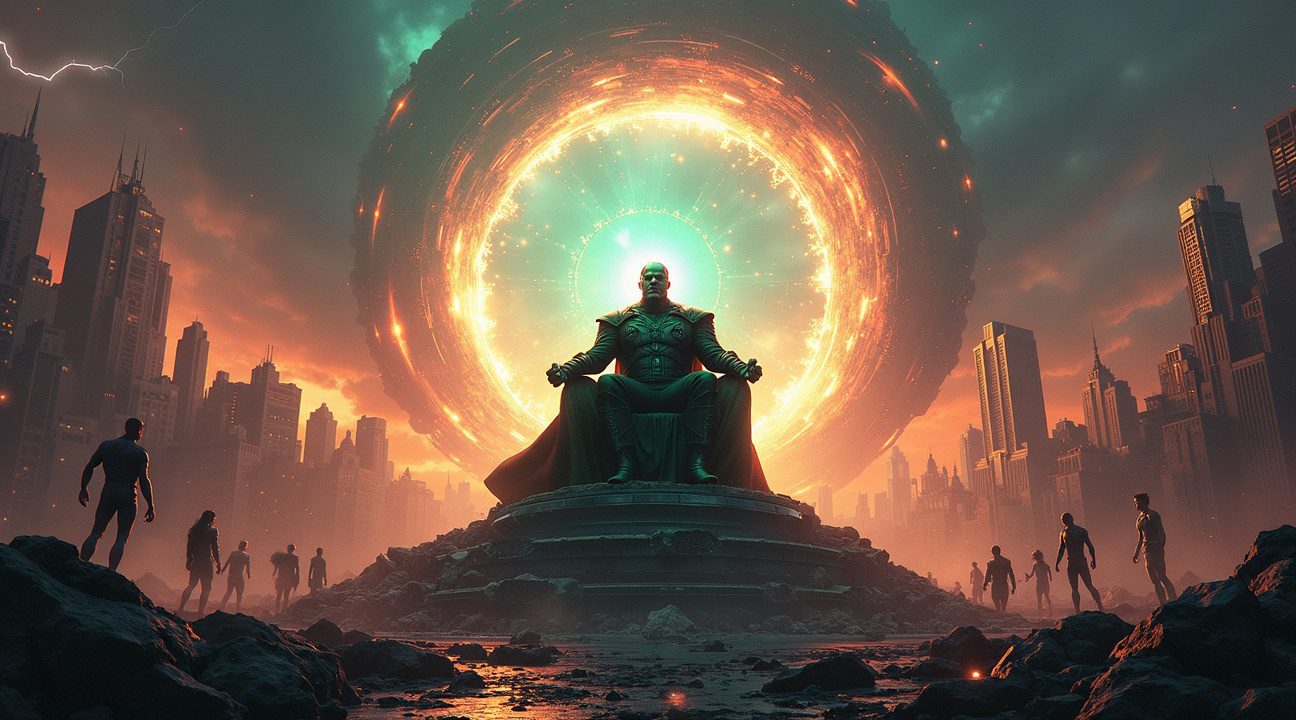
Renner’s Recent MCU Appearances and Disney Plus Future
Jeremy Renner’s final appearance as Hawkeye in the Marvel Cinematic Universe came through the 2024 Disney+ series Echo, marking what many fans didn’t realize would be his last portrayal of the beloved archer in the expansive franchise. This limited series served as a continuation of storylines established in previous Disney+ shows, allowing Renner to bring closure to his character’s arc outside the traditional theatrical releases.
Streaming Platform Opportunities Remain Open
While Renner has definitively closed the door on returning for future Avengers films, he’s maintained a notably different stance regarding Disney+ projects. The actor has expressed genuine enthusiasm about the possibility of returning for a second season of Hawkeye on the streaming platform, should the stars align properly. Several factors continue to influence these potential future appearances:
- Contract negotiations remain fluid between Renner’s representatives and Disney executives
- Production schedules must accommodate Renner’s recovery timeline and other professional commitments
- Creative direction for potential storylines requires alignment between Renner’s vision and Marvel’s broader narrative plans
- Audience reception and streaming metrics from previous Disney+ appearances factor into renewal decisions
The distinction between theatrical releases and streaming content represents a strategic shift for many established MCU actors. Renner’s openness to Disney+ projects while declining film appearances reflects the changing landscape of superhero entertainment, where streaming platforms offer more intimate storytelling opportunities and potentially less demanding production schedules.
Recent developments in entertainment industry acquisitions have also influenced how actors approach long-term franchise commitments. The flexibility offered by episodic content allows performers like Renner to maintain connections with beloved characters while managing personal and professional priorities more effectively.
Production timelines for Disney+ Marvel content typically allow for more accommodating schedules compared to major theatrical releases. This factor becomes particularly significant given Renner’s recent recovery period and his expressed desire to balance family commitments with professional obligations. The actor’s positive comments about potential Disney+ returns suggest he values the creative control and manageable production demands these projects often provide.
Industry insiders have noted that Marvel Studios continues exploring character-driven narratives that don’t require the massive ensemble commitments of Avengers films. This approach opens doors for actors like Renner to contribute meaningfully to the MCU without the extensive promotional tours and lengthy production schedules associated with blockbuster releases.
The success of previous Hawkeye-centered content on Disney+ has demonstrated audience appetite for more intimate explorations of the character’s story. Renner’s willingness to consider future streaming projects indicates his recognition of this fan interest while maintaining realistic boundaries about his overall franchise involvement.
Current contract discussions reportedly focus on project-by-project agreements rather than multi-film deals, giving both Renner and Marvel flexibility in future planning. This arrangement allows the actor to evaluate each opportunity based on his circumstances at the time while providing Marvel with options for incorporating Hawkeye into specific storylines when appropriate.
The entertainment landscape has shifted significantly since Renner first joined the MCU, with streaming platforms now carrying equal weight to theatrical releases in terms of cultural impact and professional prestige. His strategic approach to future Marvel involvement reflects an understanding of these industry changes and positions him to remain connected to the character that defined much of his recent career while maintaining personal autonomy over his professional choices.
What This Means for Marvel’s Legacy Character Strategy
Jeremy Renner’s departure from the Hawkeye role marks another significant milestone in Marvel’s transition away from its original Avengers lineup. With key figures like Iron Man deceased and Captain America retired, the studio faces an unprecedented challenge in maintaining the emotional core that defined the Marvel Cinematic Universe for over a decade.
This shift forces Marvel to fundamentally reimagine how it builds character connections with audiences. The original six Avengers provided a stable foundation that allowed for experimental storytelling and franchise expansion. Now, the studio must establish new emotional anchors while honoring the legacy of characters who shaped an entire generation of moviegoers.
The Rise of Multiverse and Legacy Storytelling
Marvel’s response to this challenge centers on two primary strategies that reshape the franchise’s creative direction:
- Legacy characters who inherit mantles from original heroes, such as Kate Bishop taking on the Hawkeye identity
- Multiverse variants that allow familiar faces to return in new contexts without undermining previous storylines
- Family connections that link new heroes to established characters, maintaining emotional continuity
- Team dynamics that blend veteran heroes with newcomers to create fresh group chemistry
The multiverse concept becomes particularly crucial as it offers flexibility that traditional storytelling methods cannot provide. Marvel can introduce variants of beloved characters while maintaining the integrity of their original arcs. This approach allows the studio to have its cake and eat it too—honoring character conclusions while keeping doors open for future appearances.
Legacy characters represent a more traditional approach to superhero succession, but one that requires careful character development to succeed. Kate Bishop’s introduction in the Hawkeye Disney+ series demonstrated how effectively this strategy can work when executed properly. The torch-passing felt organic rather than forced, establishing her as a worthy successor rather than a mere replacement.
The studio’s pivot also reflects broader changes in audience expectations and storytelling possibilities. Modern audiences embrace complex narratives that span multiple dimensions and timelines. Entertainment franchises across various media have proven that audiences can follow intricate multiverse concepts when properly executed.
This strategic evolution positions Marvel to maintain franchise longevity without becoming stagnant. The original Avengers arc provided a complete narrative that couldn’t continue indefinitely without diminishing returns. By embracing legacy and multiverse storytelling, the studio creates opportunities for both familiar comfort and narrative surprise.
The emphasis on these new approaches also allows Marvel to address representation and diversity more effectively. Legacy characters can reflect contemporary audiences while maintaining connections to established mythology. Diverse storytelling becomes possible within established frameworks rather than requiring entirely new properties.
Marvel’s legacy character strategy extends beyond simple replacement scenarios. The studio creates opportunities for mentorship relationships, team dynamics that blend generations, and storylines that explore what it means to carry forward heroic ideals. These themes resonate with audiences who have grown alongside the original characters.
The multiverse component adds another layer of creative freedom that traditional superhero storytelling often lacks. Writers can explore alternate versions of characters without being constrained by previous continuity decisions. This flexibility proves invaluable when managing a shared universe spanning multiple decades and dozens of interconnected properties.
Renner’s Hawkeye departure solidifies this transition period as a permanent feature rather than a temporary adjustment. Marvel demonstrates its commitment to moving forward rather than attempting to recreate past successes. The studio’s willingness to let characters conclude their stories naturally, even when they remain popular, shows confidence in its new direction.
This strategic shift fundamentally changes how Marvel approaches future casting, character development, and long-term planning. The studio must balance nostalgia with innovation, ensuring that new characters can carry the emotional weight previously shouldered by the original Avengers. Character tributes and references help maintain connections while establishing fresh storylines.
The success of this approach will determine whether Marvel can maintain its cultural dominance beyond the original superhero team that launched the modern era of comic book cinema.
Sources:
Times of India – “Jeremy Renner Says His Hawkeye Won’t Be in Avengers”
SuperHeroHype – “Jeremy Renner Responds to Why Marvel Fired Jonathan Majors”
IMDb – [Title not provided]
SlashFilm – [Title inferred: “Marvel Kang Plans Confirmed, Hawkeye Jeremy Renner”]
Screen Rant – “Jeremy Renner Hawkeye Avengers Doomsday Shocking Answer”
Den of Geek – “Jeremy Renner Insists Hawkeye Season 2 Is Coming”

